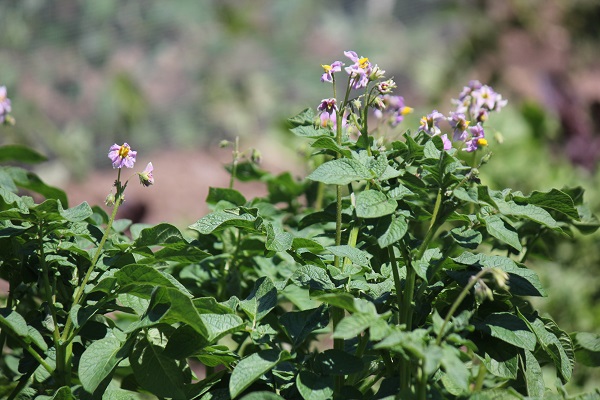Tips for Planning a Vegetable Garden
March came in like a lion with blustery winds, sub-zero temperatures, and about a foot of new snow. Warmer weather is on its way as evidenced in recent mild temperatures and sunshiny afternoons. It's the rebirth of spring, but we've got a ways to go before we can plant a vegetable garden outdoors. Undoubtedly, chilly temperatures will hang around Northwest Montana for awhile.
We haven't started any seeds indoors yet, and we'll have to wait until late May or early June when the soil is warm enough to sow seeds directly into the soil. Now is the perfect time to start planning for this year's vegetable garden.
Regardless if you are a novice or a master gardener, planning is key to a successful vegetable garden. Here are a few of the basics.
The first thing you need to consider is what to grow.
Next, determine how much space you need.
Determine the quality of your soil.
After you've got the basics down, you'll also need to decide if you are going to start your vegetable garden by seed, plants, and whether you'll grow organic. And be sure to check planting dates for various vegetables and what grows best in your area. Local garden shops are an excellent source of information for that.
You've set the foundation and are on your way to fresh, wholesome, free food!
Here's a sample garden plot idea to get your creative juices flowing.
Try this garden plot planning tool from the almanac. It's free!
 |
| Our snowy road. |
We haven't started any seeds indoors yet, and we'll have to wait until late May or early June when the soil is warm enough to sow seeds directly into the soil. Now is the perfect time to start planning for this year's vegetable garden.
Regardless if you are a novice or a master gardener, planning is key to a successful vegetable garden. Here are a few of the basics.
The first thing you need to consider is what to grow.
- Think about the vegetables that you and your family like to eat. Make a list. Turn it into a family affair and encourage everyone's input. That way you're sure to start off on the right track. It's fun to experiment with growing something different and unusual, but it isn't prudent to grow something that will go to waste. One of the benefits of having your own vegetable garden is the savings; it would be counter-productive to throw away food because your family won't eat it. Also, determine how much you think your family will eat and/or care to preserve by canning or freezing, and then go from there. We've learned the hard way that a few crooked-necked squash plants will produce more than our family desires. Better planning and research would have meant less squash and more of another vegetable crop that our family prefers.
Next, determine how much space you need.
- I wouldn't discourage container gardening for anyone with limited space. Tomatoes and pumpkins perform well in pots, and potatoes can be grown in plastic barrels. But if you have the space, a 16 X 10 foot plot will give you room enough to plant a variety of vegetables to feed your family for the whole summer with enough left over for canning, freezing, or sharing. Be sure your plot is located in full sun and in a spot that can be easily watered. If you are in a rocky region, you may have to build a raised bed and add your own soil.
Determine the quality of your soil.
- By no means am I an expert in determining soil quality, but I did pick up a couple of useful tips from Better Homes and Gardens.
1. Test the soil before you plant your vegetable garden. Check drainage by watering the soil, waiting a day, and then digging up a handful of soil. Squeeze the soil. If water streams out, you'll probably want to add organic matter or compost to improve drainage.
2. Now open your hand. If your soil falls apart easily, it's probably too sandy and you need to add organic matter. If, after you open your hand, your soil remains in a hard ball, you may have too much clay. Adding organic matter helps in this case too. So how to know if your soil is just right? If it breaks into crumbs when you poke it, shout amen! You're in business, your soil is ideal.
After you've got the basics down, you'll also need to decide if you are going to start your vegetable garden by seed, plants, and whether you'll grow organic. And be sure to check planting dates for various vegetables and what grows best in your area. Local garden shops are an excellent source of information for that.
You've set the foundation and are on your way to fresh, wholesome, free food!
Here's a sample garden plot idea to get your creative juices flowing.
Try this garden plot planning tool from the almanac. It's free!
.png)


Comments
Post a Comment
Thanks for your comments!